[Initial Important Disclaimer for Jeff!]
I know that Beksiński is not on the list of suggested artists for this period, but I wanted to take a chance on him. If you need me to pick one off of the period sheet instead I’ll pop back and write another article for one of the approved artists. Beksiński is a 20th century surrealist in the loose vein of Geiger and Dali I find fascinating and I really wanted to dive deeper into researching and showcasing him and his work. I’ve still done reading on the other artists as well, so please let me know if deviating from the list is unacceptable and I can revisit and rewrite if necessary.
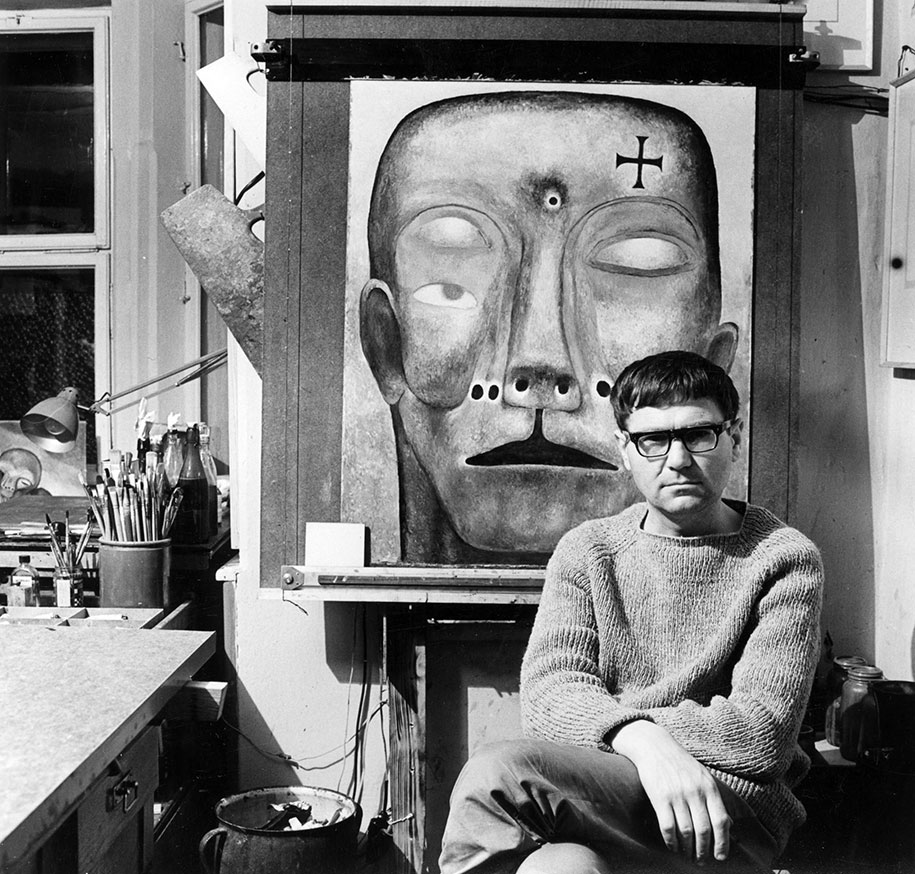
Beksinski in his studio apartment in Sanok, Poland. He suffered from an obsessive-compulsive disorder and preferred not to leave his designated Home Bases: “my life is dominated by a neurotic diarrhea, and that’s it. Hence my reluctance to travel and it remains indifferent whether the journey concerns deportation to Siberia or yacht trips around the world. (…) EVERYTHING that separates me from the BASE (which is a house or an apartment that I own) exposes me to a specific conditioned nervous tension “.
I’ve always felt like I never quite “got” this period of art until recently. The move into Cubist abstraction and sometimes aggressively absurd nonsense presented by Dada artists sometimes felt alienating. It didn’t really grab me, and I couldn’t understand why some people were so enamored with it. That actually changed this week with a short exercise Andrew put us through, which really helped Cubism *click* for me. Dada is still unapologetically hit or miss (some of the more self-indulgent DuChamp pieces we covered in Judy’s class could make me pass out from how hard I wanted to roll my eyes, but that perhaps reflects my general disinterest for the majority of Conceptual Art). That being said, I also had somewhat of a hit or miss relationship with surrealism.
Previously, I had found a lot of Surrealist works to have an almost obnoxious random-for-randomnesses-sake quality to them. I was glad to have this prejudice challenged in lecture, and found myself warming to the movement a little more. I wanted to bring in a post on one of the few Surrealist artists I’d greatly admired before having that epiphany moment, and that artist is Zdzisław Beksiński of Poland.
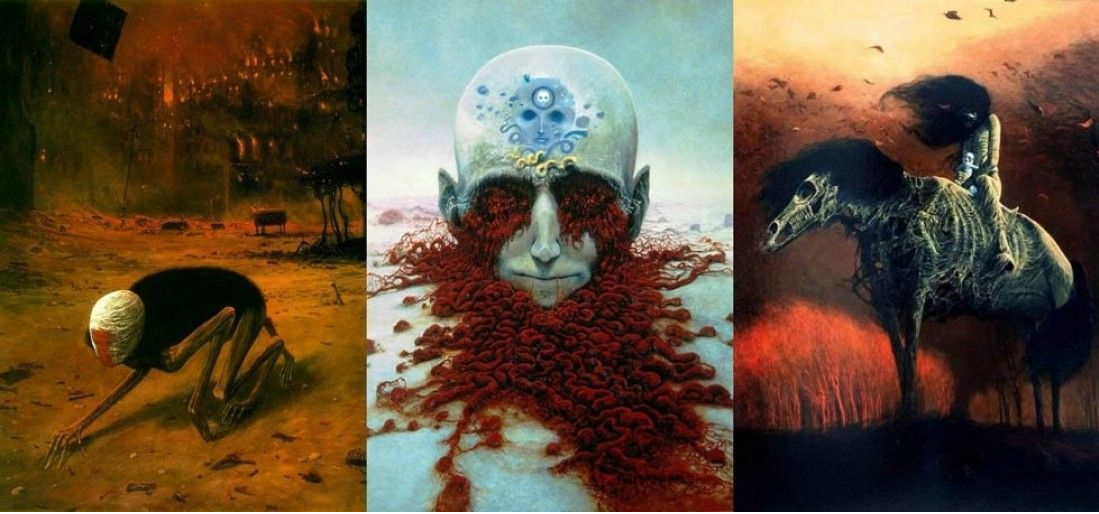
Three oil works, all untitled. Beksinski refused to title his paintings and wasn’t particulary interested in interpretations of them. He maintained that even he did not know the meanings of his works, and preferred to keep all his works unnamed.
Though he started out as a photographer, architecture student and graphics artist, his paintings would become what he was most well known for. He was a notable autodidac, something I found extremely relatable as I’d had to teach myself most of what I’d learned in both drawing and my other hobbies. Despite a lack of any formal education, he was exceptionally precise and had a knack for composition and perspective that I find extremely compelling.
The 1960s would mark what would be called his “Fantastic Period”, an extremely prolific phase where he would turn out over 300 paintings. His themes would darken, with elements of body horror, desolation and decay with the surrealism influence taking on a more Baroque or Gothic twist. This would also mark a huge achievement for him: a solo exhibition in 1964 was a wild success, with all of his painting being bought out. On his own exhibitions, he’s quoted as saying “Hundreds, if not thousands of times, I have emphasized that I do not go to the openings of my own and not my own exhibitions, because it is a terrible stress for me! I cannot stand such situations. ”
He became a leading Polish contemporary painter through the recognition this bought him, which is incredible considering the suffocating grip of Russian Communisn Poland was subjected to at the time. On his work, he was quoted as saying: ”
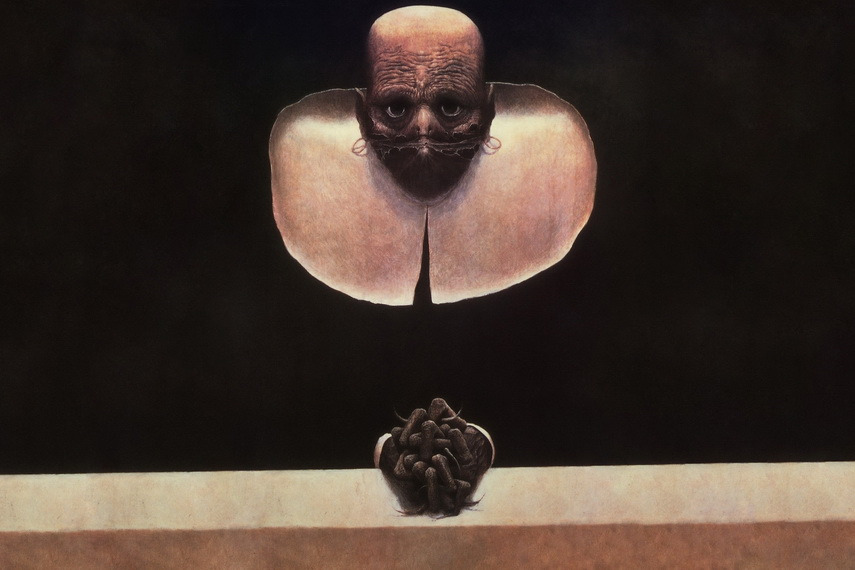
Beksinski considered most of his paintings humorous or optimistic, quite at odds with what others though of the themes of bleak decay, mortality and repugnant horror.
Zdzisław was known to have commented “I wish to paint in such a manner as if I were photographing dreams” similarly to how Dali approached his work, though wildly different in tone and execution, with less of Dali’s affinity for the absurd or the irreverent. In contrast, he was known as a quiet and kind man, remembered for his warmth, modesty and sharp sense of humour. He loved painting to music, commenting that it felt like there was an emptiness when he painted in silence.

Untitled, as before. His influence on later “dark” art is apparent in works like this. Some of my favorite contemporary painters like Paolo Girardi and David S. Herrarias have clear influence from his colour palettes and composition technique.
His art would also prove enormously influential in later decades. In music, the metal scene in particular reveres the art of Beksinski with many musicians and illustrators paying respect to his vision. In film, famous directors like Guillermo del Toro of Pan’s Labyrinth cite Beksinski’s paintings as a direct inspiration. The latter has said of his work: “In the medieval tradition, Beksinski seems to believe art to be a forewarning about the fragility of the flesh– whatever pleasures we know are doomed to perish– thus, his paintings manage to evoke at once the process of decay and the ongoing struggle for life. They hold within them a secret poetry, stained with blood and rust.”

Some of his landscape paintings remind me of the landscapes of JMW Turner.

A haunting monolith crawls with tongues of flame. The spindly and eerie proportions of the wolf are foreboding, giving a sense of withering away.

A rare brightly coloured painting, this almost feels like it could be a Rococo piece when I glanced at the thumbnail. On closer look, the red figure brings this firmly back down into Beksinski’s realm, seeming to give off a sickly light or corrupting influence to the ground around it, lurking among the abandoned finery of the pillars.
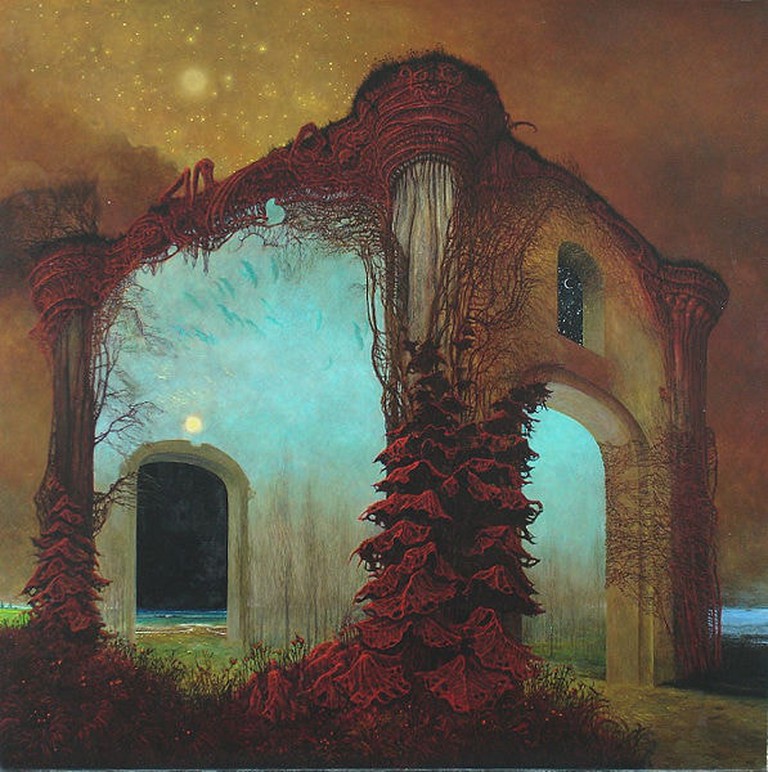
Beautiful contrast in this, I’m continuously blown away knowing he was self-taught and learned to pull a composition and palette like this together through trial, error and thoughtful iteration.
Tragically, Beksinski’s last years would be as grim as his paintings. His wife passed of cancer in 1998, and a year later, his son (a popular radio presenter and music journalist) would commit suicide. He was unable to come to terms with his son’s death, and kept an envelope pinned to the wall that said “For Tomek in case I kick the bucket”. In 2005 he would be found dead in his apartment, stabbed to death by his caretaker’s 19 year old for refusing to give him the sum of a few hundred złoty (roughly $100). There’s now a memorial museum dedicated to him in Poland housing roughly 50 of his paintings and well over a hundred of his drawings, with the rest in possession of avid personal collectors.
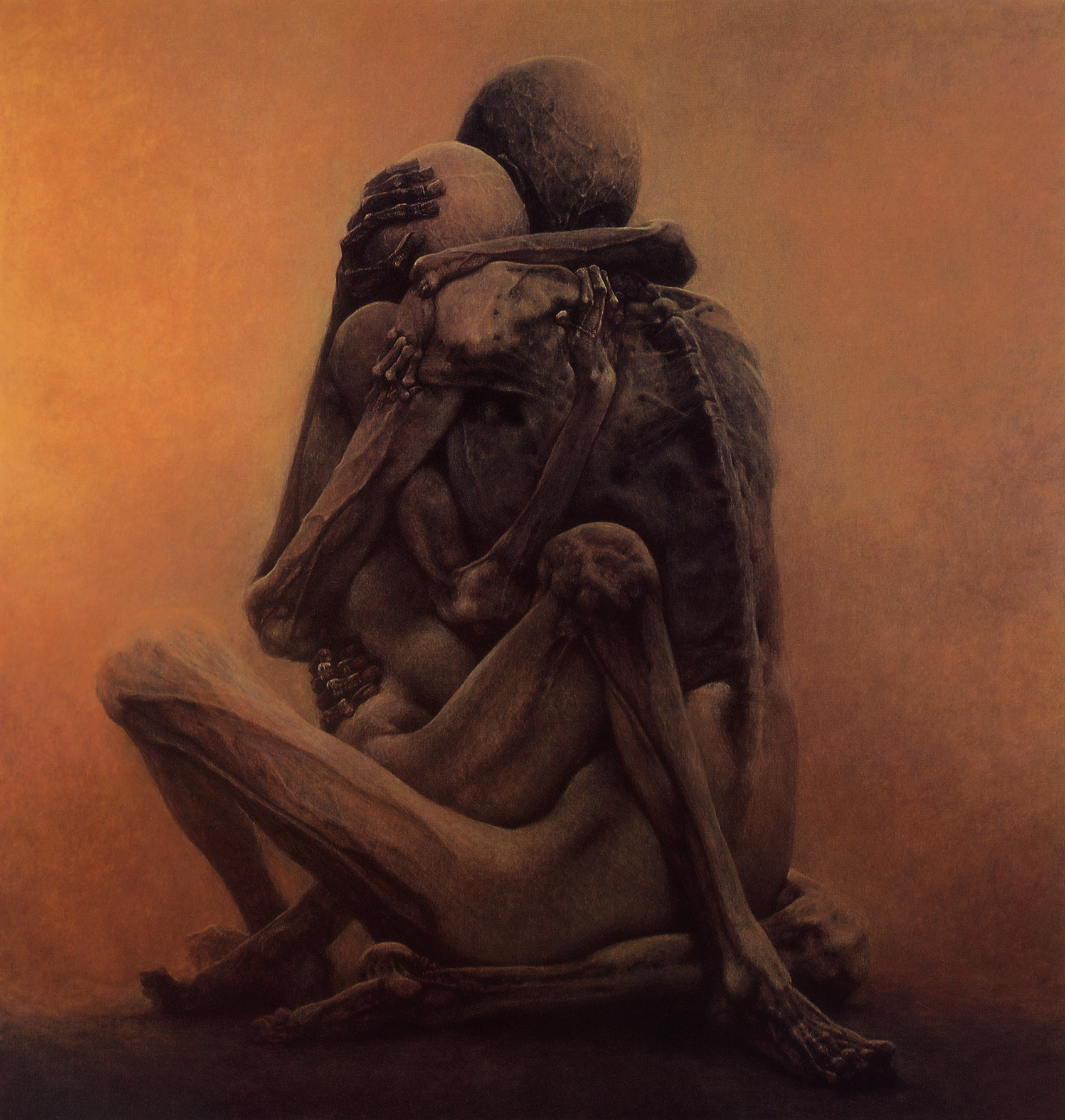
Sourcing:
https://www.mensxp.com/culture/arts/36538-this-polish-painter-s-twisted-dark-artwork-is-something-straight-out-of-a-nasty-nightmare.html
https://art.vniz.net/en/beksinski/
https://www.widewalls.ch/artist/zdzislaw-beksinski/
https://culture.pl/en/artist/zdzislaw-beksinski
https://culture.pl/en/article/the-cursed-paintings-of-zdzislaw-beksinski
https://www.shopbeksinski.com/
The Tragic Story of Zdzisław Beksiński, the Artist Who Inspired Guillermo del Toro

November 15, 2018 at 11:30 am
John,
You continue to amaze me with your insights and personal writing style. I certainly don’t mind you stepping outside of the surrealists to introduce me to this unique Polish artist. You seem to be gleaning an immense amount of knowledge in this class with your keen interest and commitment. I especially appreciate your deeply felt musings on all of the artists you’ve written about and I always look forward to reading your posts. Keep up the excellent work… stellar!
Jeff
November 16, 2018 at 2:47 pm
Goodness, thank you Jeff! I’m glad it was kosher to step out a bit, this has been a big year for me of exploring new art and there’s still loads I’d like to research and write about as I dive into new artists and influences. Looking forward to what’s in store for Monday’s segment!